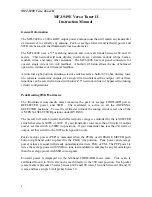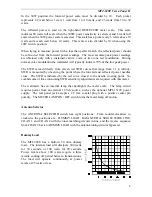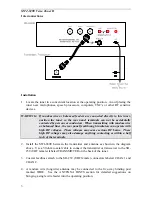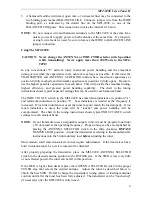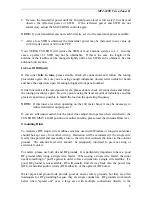
MFJ-949E Versa Tuner II
1
MFJ-949E Versa Tuner II
Instruction Manual
General Information
The MFJ-949E is a 300 watt RF output power antenna tuner that will match any transmitter
or transceiver to virtually any antenna. Peak or average forward and reflected power and
SWR can be read on the illuminated cross-needle meter.
The MFJ-949E uses a "T" matching network and covers all bands between 160 and 10
meters. This network will tune dipoles, inverted-vees, verticals, mobile whips, beams,
random wires, and many other antennas. The MFJ-949E has rear panel connectors for
coaxial, single wire or two wire feedlines. A built-in 4:1 balun allows the use of balanced
open wire, twinlead, or twin-axial feedlines.
An internal eight position antenna-selector switch selects a built-in 50 ohm dummy load,
two separate coaxial line outputs, or a single wire line-balanced line output. All of these
functions can be selected in tuned (with tuner's "T" network in line) or bypassed (no tuning
circuit) configurations.
Peak Reading SWR/Wattmeter
The illuminated cross-needle meter measures the peak or average FORWARD power,
REFLECTED power, and SWR. The wattmeter is active in all the ANTENNA
SELECTOR positions. To use the wattmeter without the tuning circuit select one of the
ANTENNA SELECTOR positions under BYPASS.
The meter's full scale forward and reflected power range is controlled by the left METER
switch that selects 300W or 30W. If your transmitter runs more than 30 watts of output
power, set this switch to 300W (in position). If your transmitter has less than 30 watts of
output, set this switch to the 30W switch position (out).
Peak envelope power (PEP) is measured when the PEAK or AVERAGE METER push
button (right-hand side) in placed in the PEAK (in) position. Peak power and average
power values are equal with steady unmodulated carriers, FSK, or FM. The PEP power is
twice the average power with SSB two tone test modulation, and may be any amount larger
than the average power with SSB voice signals.
Forward power is displayed on the left-hand FORWARD meter scale. This scale is
calibrated from 0 to 300 watts and is read directly in the 300 watt position. Each picket
(scale mark) represents 25 watts between 300 and 100 watts, 10 watts between 100 and 10
watts, and has a single 5 watt picket below 10.


